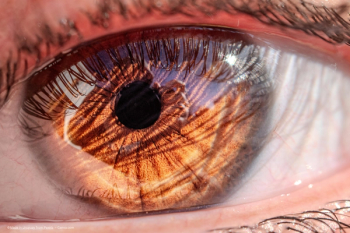
SLT in glaucoma management
A good alternative treatment option for reducing IOP
Argon laser trabeculoplasty (ALT) involves the use of a blue/green argon laser to treat the outer part of the trabecular meshwork and thereby improve aqueous flow reducing IOP. Selective laser trabeculoplasty (SLT) involves the use of a 532-nm frequency-double q-switched nd:YAG laser to selectively target cells of the trabecular meshwork without causing thermal or collateral damage to the surroundings structures.
ALT provided longer control of intraocular pressure (IOP) without the need to for additional therapy. Despite this, ALT did not supplant medication as primary therapy in patients with glaucoma. In fact, there has been no widespread consensus on the role of laser trabeculoplasty in the stepped regimen of glaucoma management.
Complications and SLT
We have studied inflammation and IOP spikes occurring after SLT in a prospective model.1 All patients in the study were treated with SLT and inflammation was measured with the Kowa laser flare meter. Inflammation was also measured with the slit lamp.
The levels of inflammation were not found to be significant with either the laser-flare meter or the slit lamp examination. In this study, patients were treated at 90 degrees, but a similar study published by Martinez-de-la-Casa showed no inflammation even when eyes were treated at 180 degrees.2 No IOP spikes after SLT treatment were detected.
Treatment angle and SLT
Regarding the amount of angle to treat, we have studied a retrospective model with 5 years follow up post-SLT treatment and concluded that failure is higher when the eyes were treated at 90 degrees than when the eyes were treated at 180 degrees.3 In any case, the eyes can be treated twice improving the results. When eyes were treated at 90 degrees, the average time to failure was around 18 months.
Various forms of glaucoma and SLT
We have compared, in a prospective study, SLT's IOP lowering effects in primary open-angle glaucoma (POAG) versus pseudoexfoliative glaucoma (PXFG) patients.4 The study concluded that no significant difference was found and that SLT reduces IOP around 6 mmHg from baseline in both groups when the patients were followed for at least 18 months after treatment.
Pigmentary glaucoma patients didn't present with such good results.5 Though in the short-term, the results appeared to be good, the IOP reduction was not very stable and only a success rate of 14% was detected when the patients were followed for 4 years. It's also advisable to adjust the dose to these high pigmented trabecular meshworks to not induce complications such as inflammation and IOP spikes.
Newsletter
Get the essential updates shaping the future of pharma manufacturing and compliance—subscribe today to Pharmaceutical Technology and never miss a breakthrough.







































